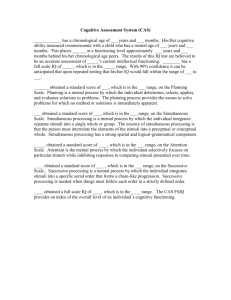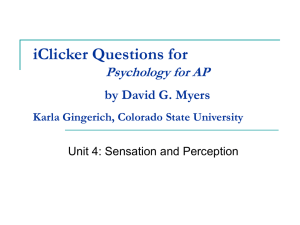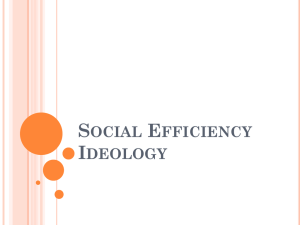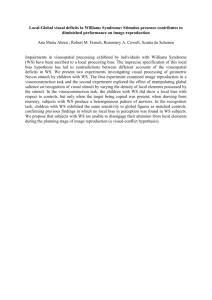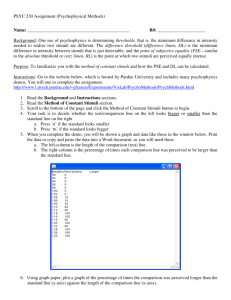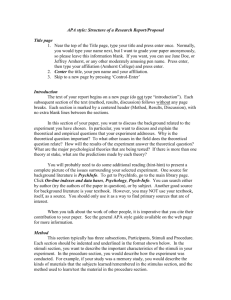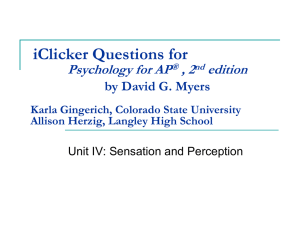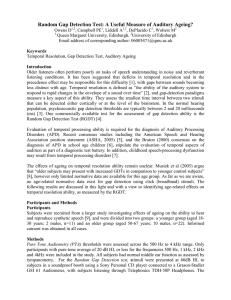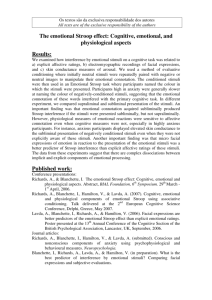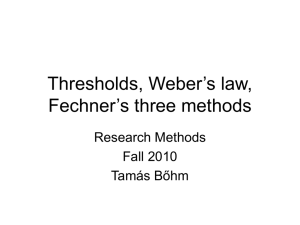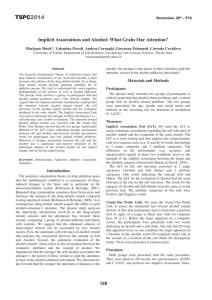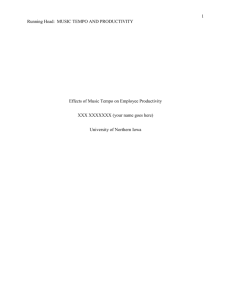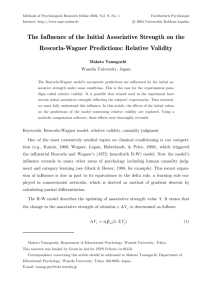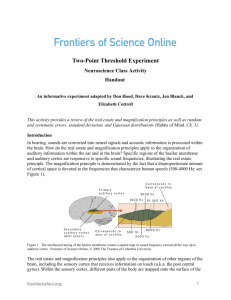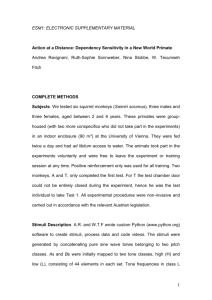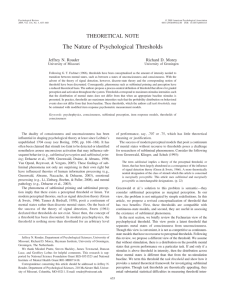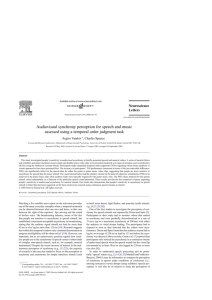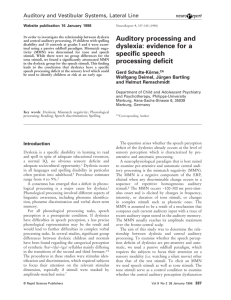Introduction
advertisement
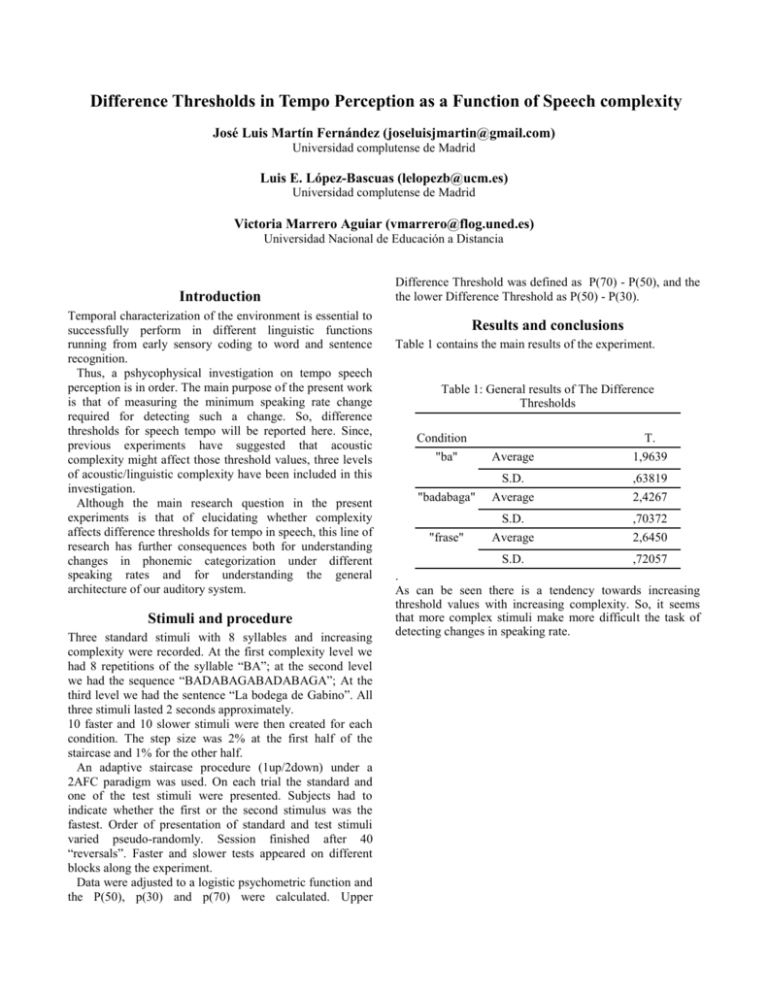
Difference Thresholds in Tempo Perception as a Function of Speech complexity José Luis Martín Fernández (joseluisjmartin@gmail.com) Universidad complutense de Madrid Luis E. López-Bascuas (lelopezb@ucm.es) Universidad complutense de Madrid Victoria Marrero Aguiar (vmarrero@flog.uned.es) Universidad Nacional de Educación a Distancia Introduction Temporal characterization of the environment is essential to successfully perform in different linguistic functions running from early sensory coding to word and sentence recognition. Thus, a pshycophysical investigation on tempo speech perception is in order. The main purpose of the present work is that of measuring the minimum speaking rate change required for detecting such a change. So, difference thresholds for speech tempo will be reported here. Since, previous experiments have suggested that acoustic complexity might affect those threshold values, three levels of acoustic/linguistic complexity have been included in this investigation. Although the main research question in the present experiments is that of elucidating whether complexity affects difference thresholds for tempo in speech, this line of research has further consequences both for understanding changes in phonemic categorization under different speaking rates and for understanding the general architecture of our auditory system. Stimuli and procedure Three standard stimuli with 8 syllables and increasing complexity were recorded. At the first complexity level we had 8 repetitions of the syllable “BA”; at the second level we had the sequence “BADABAGABADABAGA”; At the third level we had the sentence “La bodega de Gabino”. All three stimuli lasted 2 seconds approximately. 10 faster and 10 slower stimuli were then created for each condition. The step size was 2% at the first half of the staircase and 1% for the other half. An adaptive staircase procedure (1up/2down) under a 2AFC paradigm was used. On each trial the standard and one of the test stimuli were presented. Subjects had to indicate whether the first or the second stimulus was the fastest. Order of presentation of standard and test stimuli varied pseudo-randomly. Session finished after 40 “reversals”. Faster and slower tests appeared on different blocks along the experiment. Data were adjusted to a logistic psychometric function and the P(50), p(30) and p(70) were calculated. Upper Difference Threshold was defined as P(70) - P(50), and the the lower Difference Threshold as P(50) - P(30). Results and conclusions Table 1 contains the main results of the experiment. Table 1: General results of The Difference Thresholds Condition T. "ba" Average 1,9639 S.D. ,63819 "badabaga" Average 2,4267 S.D. ,70372 "frase" Average 2,6450 S.D. ,72057 . As can be seen there is a tendency towards increasing threshold values with increasing complexity. So, it seems that more complex stimuli make more difficult the task of detecting changes in speaking rate.

